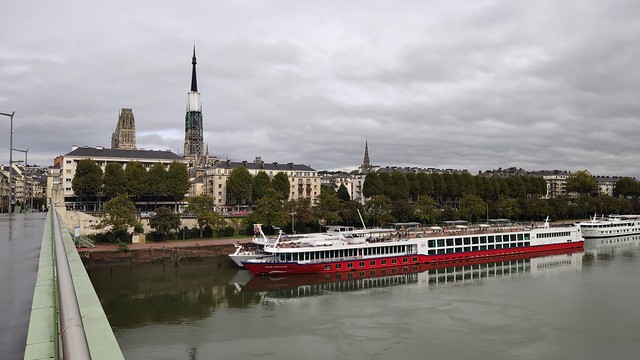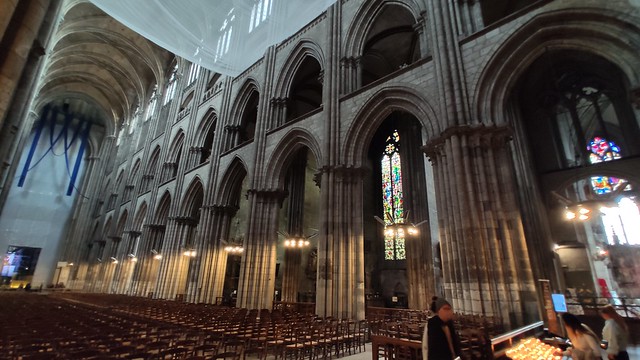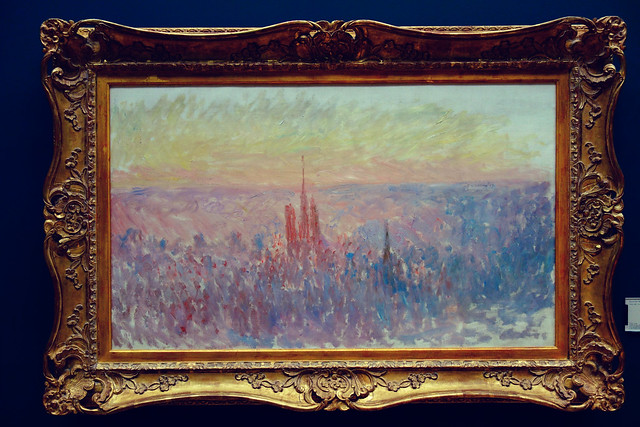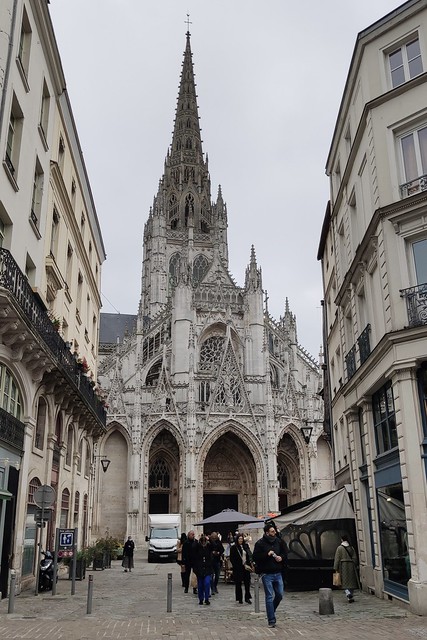Le Havre, France, less than 100km from Rouen, was more or less leveled during WWII, took a distinctly different approach to rebuilding. Today 90% of Le Havre center consists of modern, utilitarian buildings, which do not draw visitors, and even though Le Havre got themself on the UNESCO list (2005), most travel guidebooks choose to leave out Le Havre or tell people not to bother.
We had to go, because
- During COVID we watched many old French films. At least a quarter of them make some reference to Le Havre. Even though we very well know, Le Havre is no longer the same place, we just had to go.
- Le Havre seemed to be the logical base for visiting Honfleur and Etretat.
We walked a big loop around the city. We neither like or dislike their rebuild, except for the modern church of St Joseph. I loved the stained glass interior. Saint Michel also had beautiful modern stain glass. I have since grown to dislike, or at least be very discriminating of traditional stained glass windows in churches, which are only pedantic, not inspirational or transformative.
On the train from Rouen to Le Havre.
 Our apartment in Le Havre was near the Le Bassin du Commerce (Commerce Dock). There were great views: modern bridge, sunset, the Volcano Building and St Joseph's church; not to mention sailing school. We walked by it several times a day (and night).
Our apartment in Le Havre was near the Le Bassin du Commerce (Commerce Dock). There were great views: modern bridge, sunset, the Volcano Building and St Joseph's church; not to mention sailing school. We walked by it several times a day (and night).
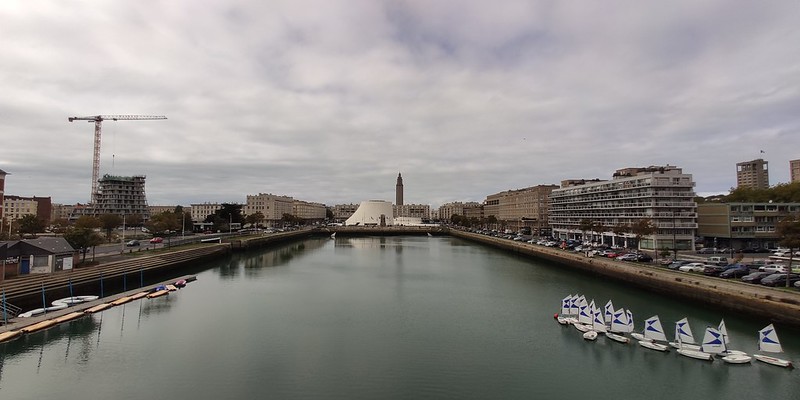


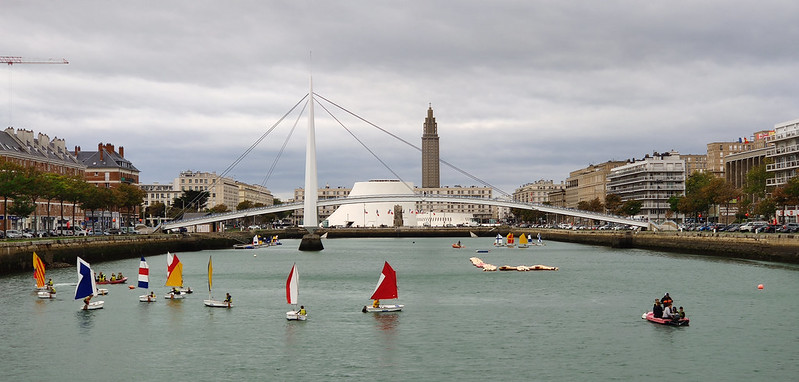

 The ferry "Contentin" runs between Le Havre and Portsmouth, England.
The ferry "Contentin" runs between Le Havre and Portsmouth, England.
 The Le Havre "Welcome Arch" is made of shipping containers (with me at right).
The Le Havre "Welcome Arch" is made of shipping containers (with me at right).
 The mouth of the Port of Le Havre leads out into La Manche (English Channel).
The mouth of the Port of Le Havre leads out into La Manche (English Channel).
 Yacht Basin.
Yacht Basin.
 At the beach there is a skatepark and a boulodrome. ;-)
At the beach there is a skatepark and a boulodrome. ;-)

 It's the time of year to dismantle and store the beach huts over the winter.
It's the time of year to dismantle and store the beach huts over the winter.
 The Promenade .
The Promenade .
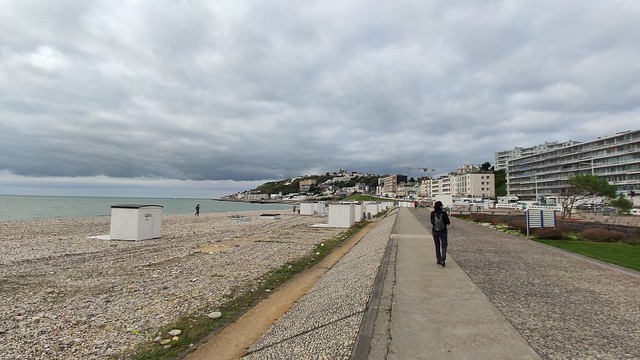 Behind the Promenade, older mansions and modern apartments face the sea.
Behind the Promenade, older mansions and modern apartments face the sea.

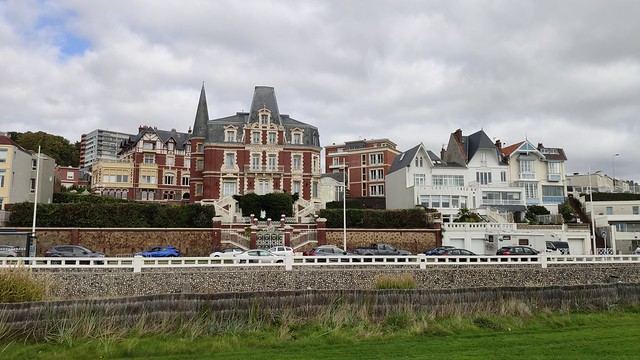 A tram runs from the beach through the heart of the city to the train and bus stations.
A tram runs from the beach through the heart of the city to the train and bus stations.
 View from the old fortress, now a garden park (Les Jardins Suspendus).
View from the old fortress, now a garden park (Les Jardins Suspendus).

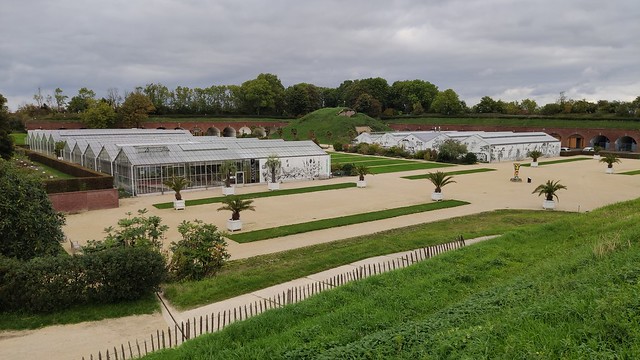
 City Hall, rebuilt in a modern style after WWII (with tram stop in front). And a nice varition on classical columns.
City Hall, rebuilt in a modern style after WWII (with tram stop in front). And a nice varition on classical columns.


 We admired the modern stained galss in St Michel located just behind City Hall.
We admired the modern stained galss in St Michel located just behind City Hall.
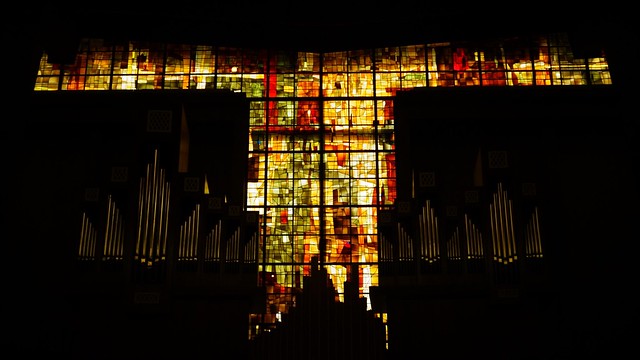
 St Joseph's Church. Also built after WWII. The interior is an amazing ensemble of wood, glass, and stone.
St Joseph's Church. Also built after WWII. The interior is an amazing ensemble of wood, glass, and stone.



 The library (lower left) has a very cool reading room.
The library (lower left) has a very cool reading room.




















































